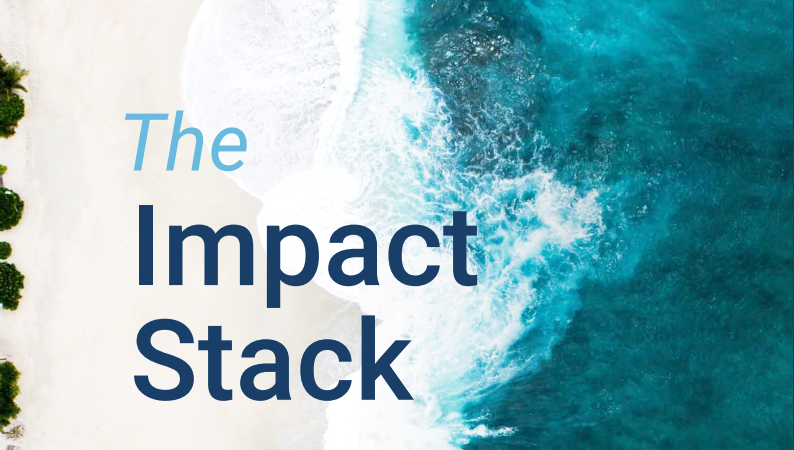There’s always a few anxious moments when it comes to releasing a major report like The Impact Stack. You focus so deeply on a specific topic for so long, and when it comes to publishing, you zoom out, and suddenly all you can see are the topics you didn’t cover.
It’s a moment of panic, but with a deadline in sight you hit publish, and as usual, the nerves were unwarranted. And so far, the feedback has been really positive!
Along the way I also earned a whole swag of new subscribers, and so I’m taking the opportunity to highlight some of the key insights that came from the process, as a way to introduce my work and the impact I’m trying to have on the world.
Lessons + Insights from publishing The Impact Stack
1. It’s still young
The maturing of the impact investment practice is what gave rise to The Impact Stack, but it’s still a young sector.
I would argue that impact measurement is not yet ‘mainstream’ as some would suggest. But it’s getting there, and the emergence of norms, that have been field tested, has allowed for pioneering funds to develop a track record. And a broader range of institutional investors are taking notice.
Professional capacity is also growing. The SDG Impact course by Cathy Clark and Duke University has seen almost 20,000 enrolments. At the same time most high-profile universities have integrated some form of ‘social impact’ research into their offerings.
But sadly, I’m yet to find an economics faculty that is genuinely engaging with the disruptive ideas that stem from impact – the conservative ‘assumptions’ remain the same.
GIIN has released its pilot approach to benchmarking. The initial focus was financial inclusion, and they released a model for the agriculture sector in recent weeks. This is great progress, but it shows we still have plenty of work to do.
On the whole, the report showed how much the sector has achieved, and what can be accomplished with minimal resources, and in spite of the doubters. Growth is accelerating, driven by injections of capital and support coming from all directions.
2. The deeper you delve into impact investing, the more there is to learn
I’ve spent years researching impact investing, I engage in debates about changes and updates, plus, I get to speak to the best in the business on my podcast.
Nonetheless, I was constantly surprised and humbled as I filled gaps in my understanding and corrected some long held assumptions. The depth of thought and rigour that has gone into the systems that have combined to build the impact frameworks available today is quite astounding,
We work hard to simplify the definitions of impact, but we should also take a moment to embrace the depth that exists. And as impact investors, we all have a duty to share our intellectual effort to take it further.
As a sector, it’s no easy task to insert oneself into the core of mainstream finance, but progress has been made with sharp elbows and investment returns that can’t be denied. It’s never easy to change the status quo.
3. Women rule impact investing
The finance industry has a long way to go on gender equity, which means we still need to apply a gender lens to assess equality and diversity.
In impact investing however, women are far better represented. 70% of the contributors to this report were women. It wasn’t intentional, I simply included those who were leading on research and insights.
To me this is a good representation of the space; where women are not only heavily represented, but where intentional effort is made to develop gender lens investment strategies that work to rebalance some of the biases that hold women back in many other industries.
4. A lot of interest in the report came from outside the sector
As a communications professional, I aim to have a clear idea of my target audience for a piece of work. And while this piece was aimed at both impact investors and investors that are impact-curious, I was pleasantly surprised to see interest come from further afield.
Plenty of investors explained that it would help them engage with this emerging concept of ‘impact’, but also business owners have said they want to explore ways to understand the impact of their business, and this helped them understand what it’s all about.
Having reached the milestone of having a best-practice model, like The Impact Stack, let’s also explore ways we can make the core learnings about ‘impact’ as a business imperative into something more foundational, so it can be shared widely.
5. It’s still hard to find professional impact investment communicators
I’ve been working as a communications consultant for impact investors for a long time, and early on I questioned whether it was viable, purely because I couldn’t see anybody else with the same job title.
Since then the community of impact communicators has grown, but it’s still small, and the process of developing this report, and seeking out insights from those in the trenches, it became clear how few of us there are.
This is a problem because it’s only through effective communication that we can spread new ideas.
Impact means change, so we’re going to need to change hearts-and-minds, and we can only do that with targeted communications and rich story-telling that comes from a place of love and empathy.
We’ve proven the model with a track record of solid returns, and we have models to turn impact measurement into impact management. Now… we need to ditch the finance jargon, and communicate the opportunity.
Share the story, about how businesses can be a force for good.



